In a world where the heart of the home ofen beats in the kitchen, maximizing space becomes a delightful yet daunting challenge, especially in smaller abodes. For many, the kitchen serves as a bustling hub of creativity, nourishment, adn connection, making the efficient use of every square inch a top priority. If you’re longing for a practical yet stylish transformation of your compact kitchen, you’re in the right place. This article explores an array of inventive small kitchen extension ideas tailored for every style and home. From clever organizational hacks to innovative design tweaks, discover how to expand your culinary sanctuary without knocking down walls or emptying your wallet. Whether you’re a culinary novice or a seasoned chef, our creative solutions will help you turn your small kitchen into a spacious haven for delicious meals and memorable gatherings.
Creative Solutions for Expanding Your Culinary Space with Vertical Techniques
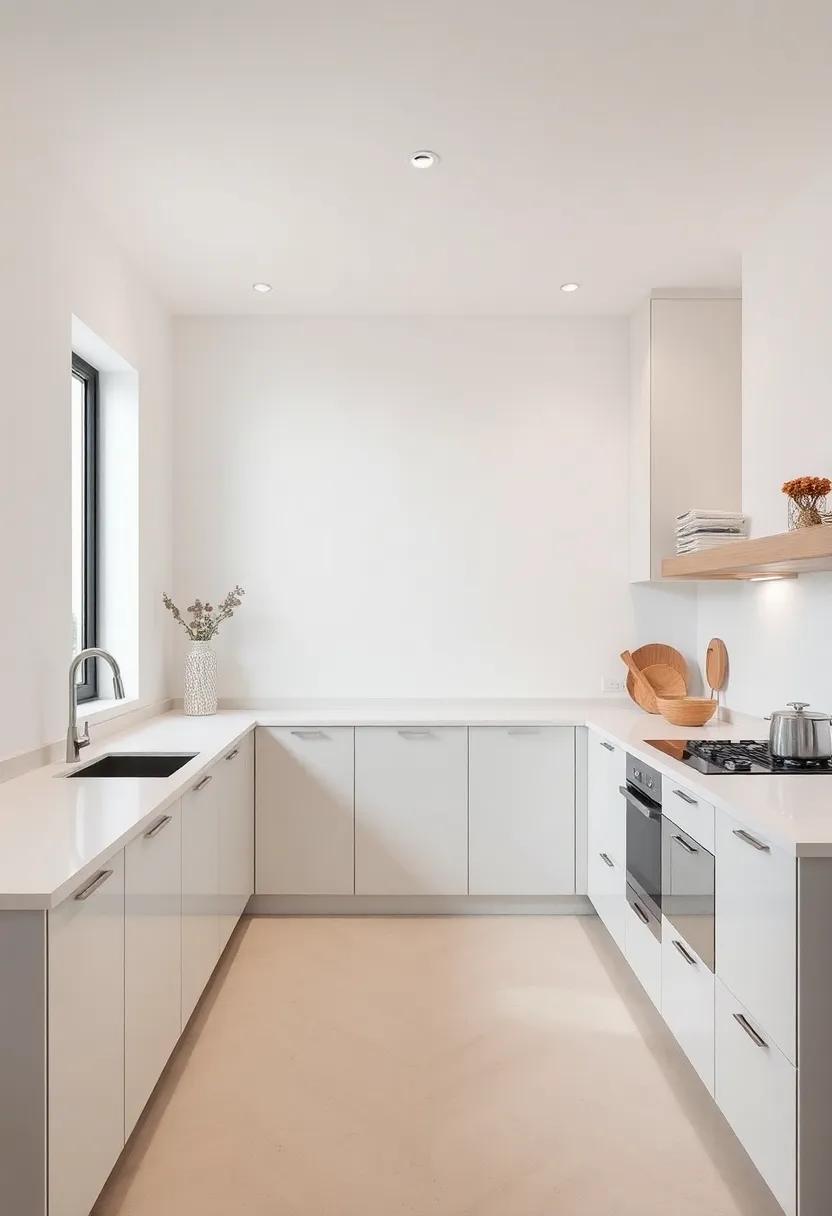
To truly maximize your kitchen space, vertical solutions can transform the way you utilize your culinary area. By shifting storage and prep areas upward, you can create an open and airy surroundings. Consider installing floating shelves to display spices and cookbooks, or use hanging pot racks to free up cabinets while showcasing your cookware. You can also employ magnetic strips on the walls for easy access to utensils, creating a culinary focal point that is both functional and visually appealing.
Investing in overhead storage solutions can considerably enhance your kitchen’s usability. Opt for ceiling-mounted cabinets or wall-mounted pegboards to keep essentials within arm’s reach.Additionally, try incorporating pull-down racks that can be easily stowed away when not in use. This approach not only keeps everything organized but also complements your kitchen’s overall aesthetic. Check out organizations like Apartment Therapy for more inspiration and tips on creative vertical solutions that fit smaller spaces.
The Elegance of Open Shelving in Small Kitchen Extensions
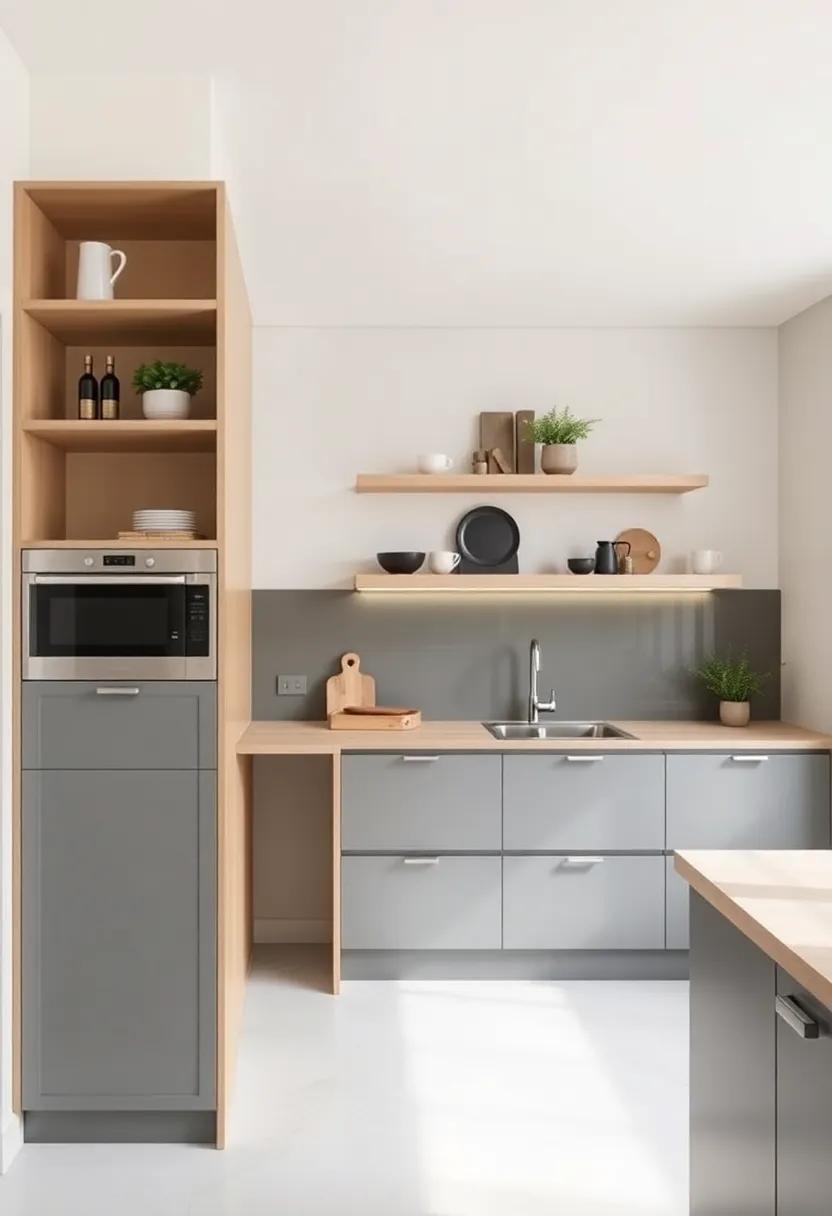
Open shelving can transform your small kitchen extension into a stunning blend of functionality and style. By eliminating bulky cabinets,you create an illusion of space while showcasing your culinary treasures. Beautifully arranged dishware, colorful spice jars, or hand-crafted bowls can serve as charming decor elements. The key to maintaining elegance is in the organization and curation of items displayed. Consider grouping similar colors or materials together to create a cohesive look that adds visual interest without feeling cluttered.
To maximize the effectiveness of open shelving, utilize the vertical space available. Tall shelves can draw the eye upward,enhancing the feeling of height in your kitchen. incorporating a mix of open and closed storage can also balance the aesthetic, allowing for practicality alongside your beautiful displays. For a touch of creativity, think about using materials like reclaimed wood or metal brackets that complement your kitchen’s overall design. Innovations in lightweight storage solutions can further streamline your arrangement, ensuring everything remains within easy reach yet elegantly presented. Explore tips and ideas on platforms like Apartment Therapy for further inspiration.
Incorporating Multi-Functional Furniture to Save Space
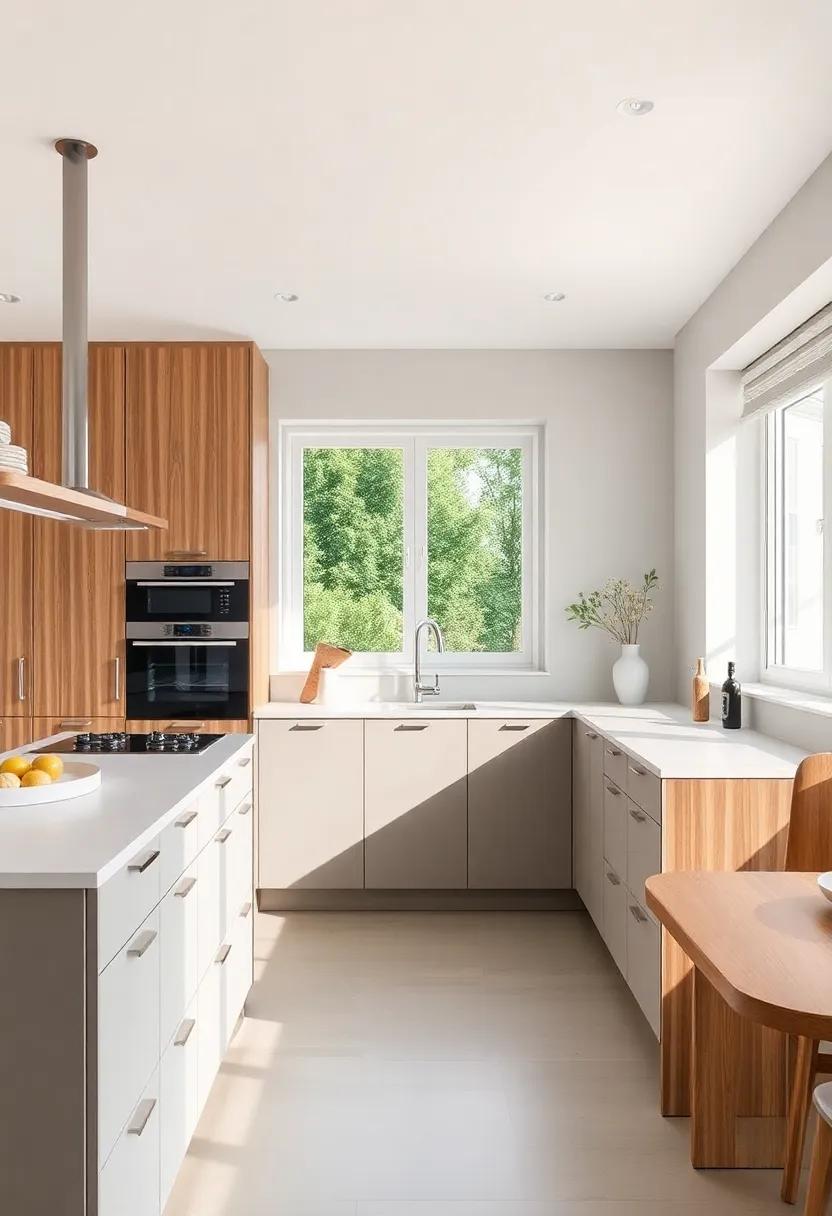
When dealing with limited kitchen space, incorporating multi-functional furniture can be a game-changer. By choosing pieces that serve multiple purposes, you not only enhance the functionality of your kitchen but also create an environment that’s both stylish and efficient. Consider a dining table that can double as a prep station or a kitchen island with storage capabilities. These versatile options allow you to maximize utility without sacrificing aesthetic appeal. Key features to look for include:
- Extendable tables: Perfect for hosting guests when needed.
- Storage benches: Great for stowing away kitchen gadgets.
- Rolling carts: Can be moved around as needed and serve as extra counter space.
Moreover, investing in furniture with built-in storage helps keep clutter at bay, making your kitchen feel more spacious. For instance, choosing bar stools that tuck neatly under a counter or selecting a coffee table with drawers can significantly contribute to a cleaner look. It’s essential to select items that complement your overall kitchen design, ensuring they remain visually appealing while being practical. To explore even more clever space-saving ideas, visit IKEA for inspiration and innovative storage solutions that perfectly fit small spaces.
Transforming Nooks into Cozy Cooking Corners
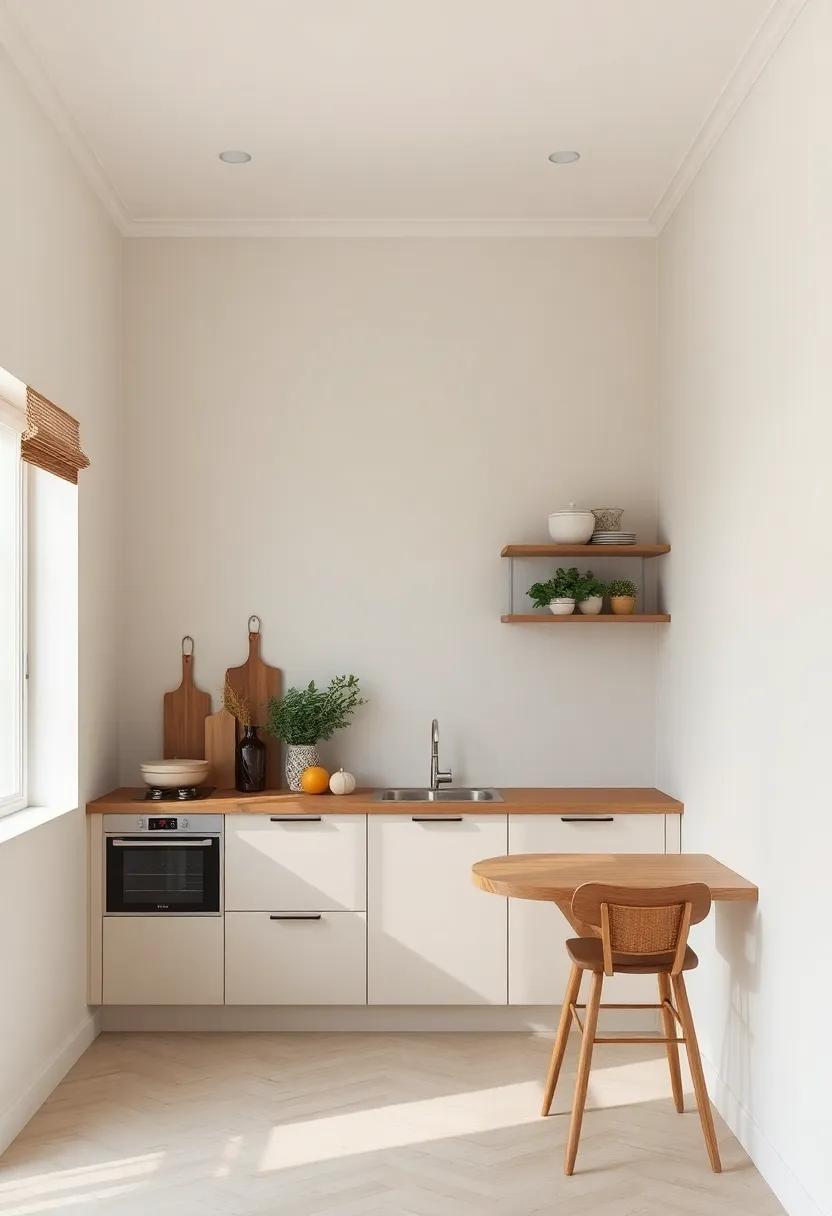
Turning an underutilized nook into an inviting cooking corner can revive the heart of your home. Whether it’s a corner of your kitchen or an alcove in your living space, consider integrating built-in shelving to showcase cookbooks and spices, coupled with a small breakfast bar for quick meals. Utilizing rich, warm color palettes and adding soft lighting can create an intimate atmosphere that encourages culinary creativity. To maximize counter space,think about floating shelves above your work area or even a compact rolling cart for mobility and extra storage.
Incorporating some personal touches can further enhance the warmth of your nook. choose decorative utensils or framed prints of favorite recipes to infuse your personality into the space. Install a pegboard to hang pots, pans, and other cooking essentials, giving your corner a workshop vibe while ensuring everything remains easily accessible. A cozy corner rug can also add comfort and delineate the cooking area from the rest of your space. For inspiration on how to elevate small cooking areas, check out designsponge.com.
Utilizing Natural Light to Make a Small Kitchen Feel Larger

One of the best ways to expand the visual space of a small kitchen is by incorporating natural light into the design. Large windows, skylights, or even glass doors can significantly enhance the brightness of the area, making it feel airy and open. Consider the use of translucent window treatments that allow for light penetration while maintaining privacy. Reflective surfaces,such as a glossy backsplash or light-colored cabinetry,can further amplify the effect of natural light,bouncing it around the room and creating the illusion of depth.
To further optimize how you use light and color, choose a light color palette for your kitchen.Shades of white,soft pastels,or light grays can contribute to an open feel. accentuate this palette with details like outdoor views, which connect the interior space to the outside world.You might also want to explore integrating glass elements, like open shelving or glass cabinet doors, to create a sense of continuity that visually pushes the boundaries of your small kitchen. For more inspiration on utilizing light in design, check out Apartment Therapy.
Integrating Innovative Storage Ideas for Maximum Efficiency
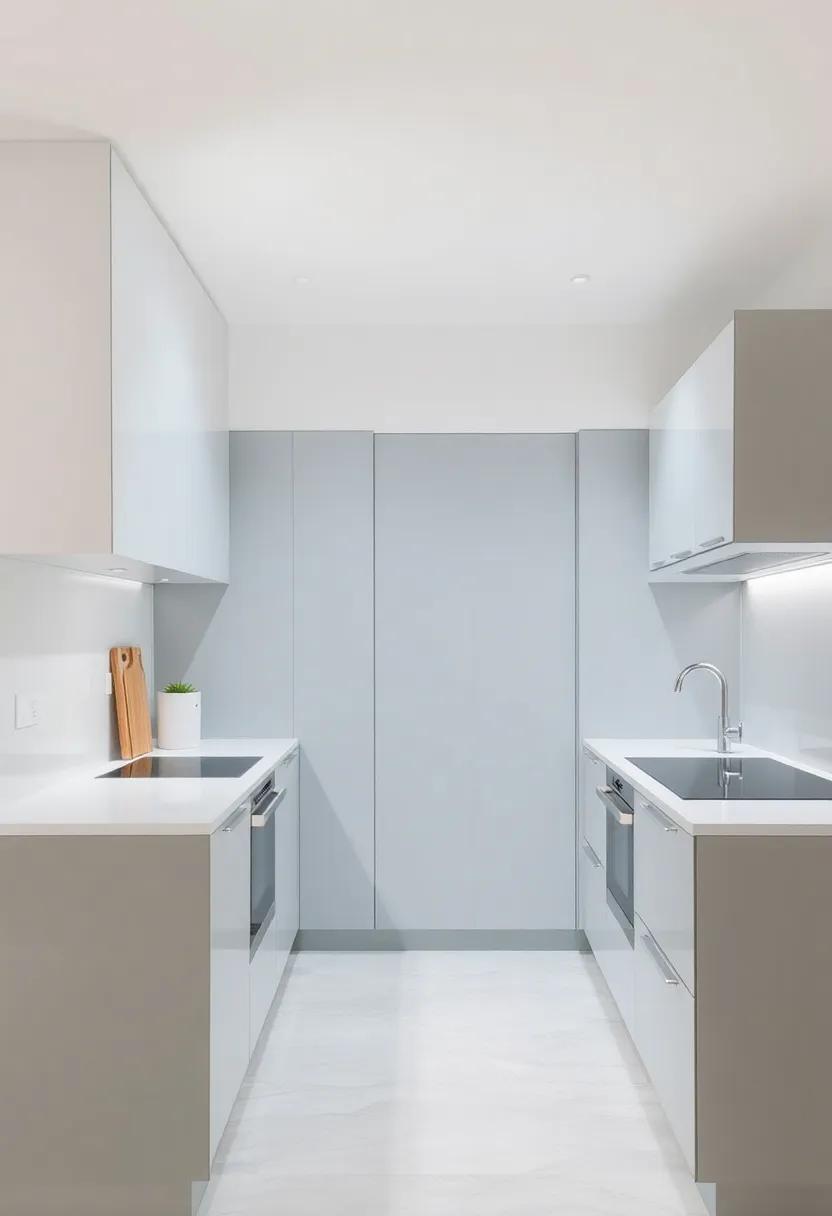
When it comes to enhancing your small kitchen, some of the most effective solutions lie in integrating innovative storage ideas. Pull-out shelves and lazy Susans can transform corner cabinets into accessible storage gems, allowing you to reach every ingredient with ease. For a sleek and uncluttered look, consider using magnetic strips for knives and other metal tools; this not only frees up counter space but also adds a modern aesthetic. Additionally, installing open shelves above countertops can create a visually appealing display for cookware, making your kitchen feel more organized and spacious.
Another smart approach is to embrace underutilized spaces. Think about incorporating recessed cabinets or over-the-door racks that can house spices, utensils, or even small appliances. Utilizing vertical space is key; wall-mounted pot racks and hanging baskets can offer stylish alternatives while keeping everyday items accessible. To really maximize your kitchen efficiency, a modular storage system allows for customization that suits your cooking habits.Investing in multi-purpose furnishings, like an island with built-in storage, can also help bridge functionality and style. For more inspiration on storage optimization, check out This Old House.
Creating an Inviting Dining Area within a Compact Kitchen
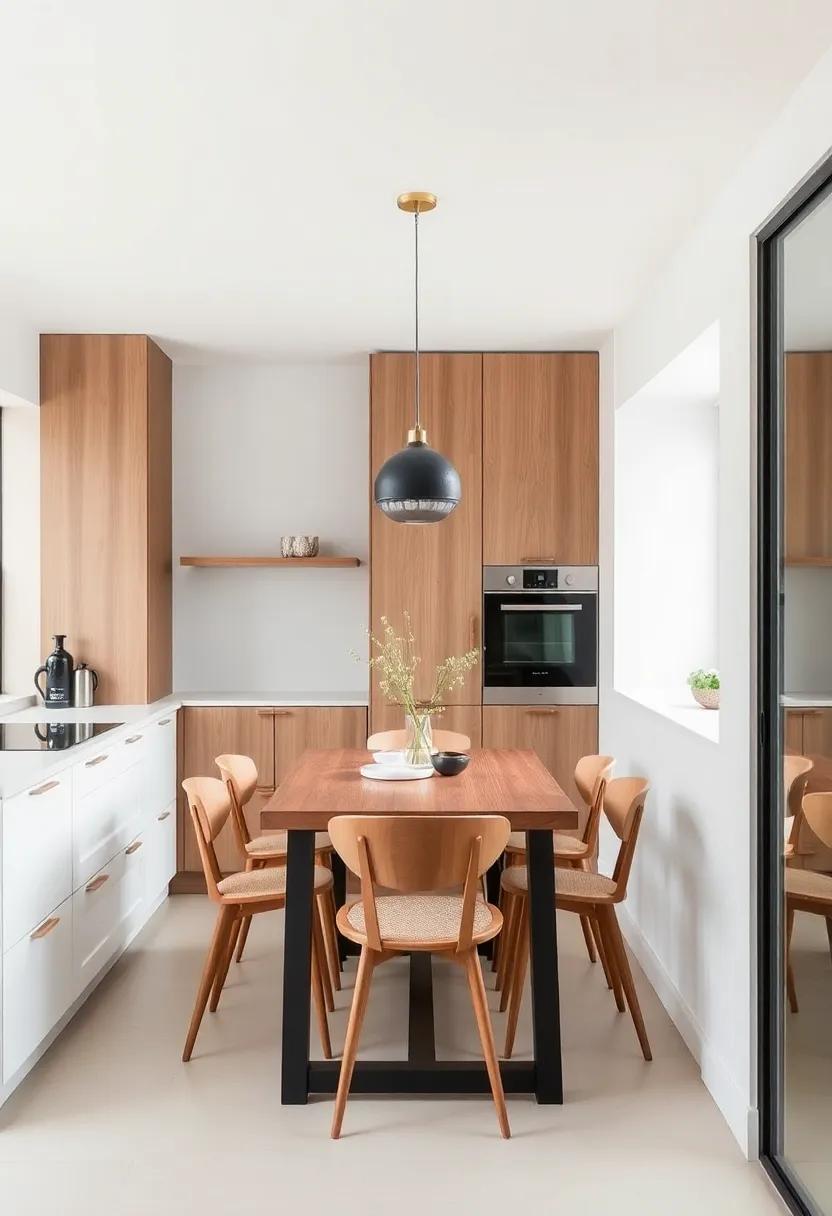
To transform your compact kitchen into an inviting dining area, consider incorporating multifunctional furniture. A drop-leaf table can easily be expanded for meals and tucked away when not in use, providing that much-needed space-saving solution.Complement this with stackable stools that can be stored away neatly, allowing adaptability and maintaining a clean aesthetic. Furthermore, adding a small bench or window seat can create a cozy nook for breakfast or casual dinners, enhancing both functionality and charm.
Another effective way to create an inviting atmosphere is through the use of color and lighting. Choose a warm color palette for your dining area, utilizing shades such as soft yellows or earthy tones to evoke a sense of comfort. Incorporate pendant lighting above the table to set the mood and designate the dining space. Additional elements like decorative shelves or a small vertical herb garden can add personal touches while optimizing space. For more ideas on designing small kitchens, you can check out Houzz for inspiration.
The Charm of Colorful Backsplashes as Space Enhancers
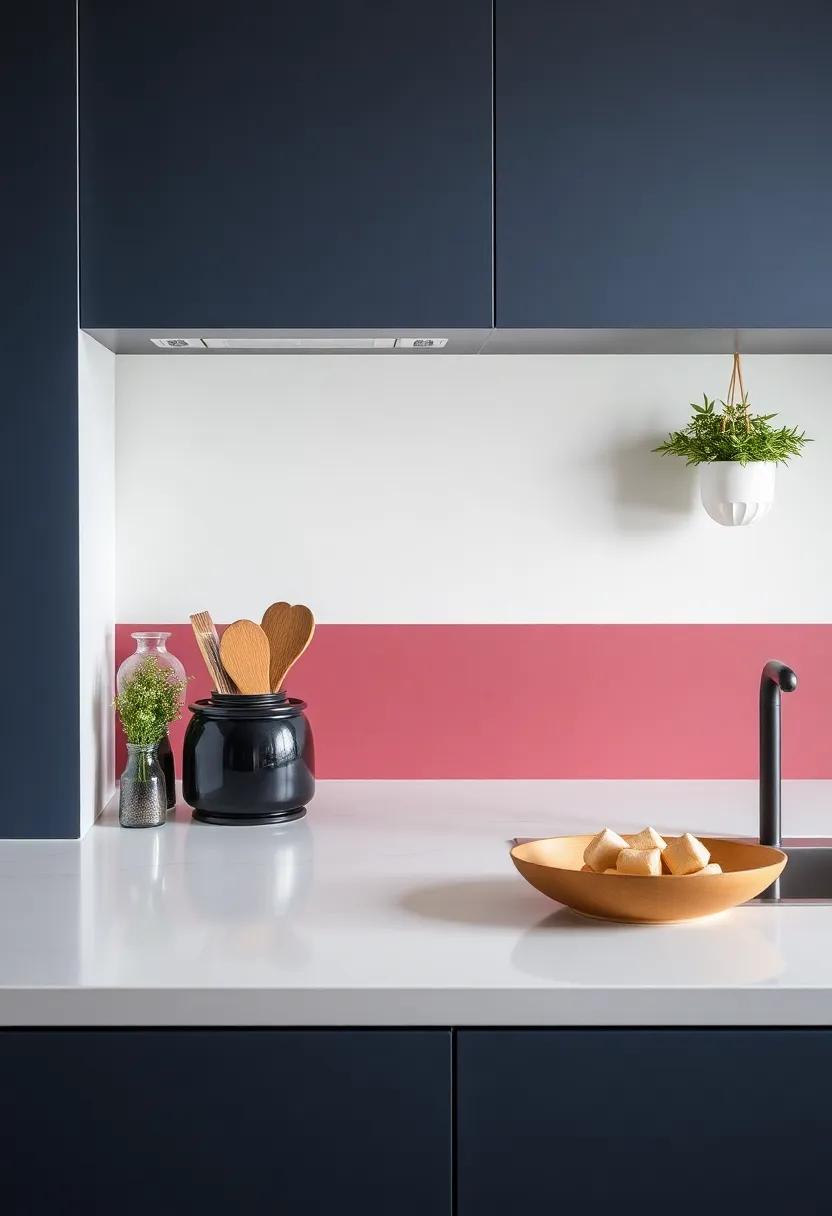
Transforming the heart of your home doesn’t require extensive renovations; sometimes, a splash of color is all it takes to breathe new life into your kitchen. Colorful backsplashes serve as stunning focal points that can visually enhance your space, making it feel larger and more inviting. These vibrant surfaces can effectively bridge the gap between functionality and artistry, adding depth and interest without overwhelming the senses. Consider options like bold mosaic tiles or vibrant glass panels that reflect light beautifully and introduce personality to your cooking area.
Incorporating a lively backsplash can also contribute to the overall spatial perception of your kitchen. The right colors can create an illusion of height and breadth, especially when paired with light cabinetry and open shelving. Opt for designs that echo the colors of adjacent rooms to create a seamless flow throughout your home. Whether you choose playful patterns or a simple, solid hue, the impact of a colorful backsplash is undeniably uplifting. explore options at TileBar to discover innovative designs that resonate with your style.
Smart Appliance Choices for optimizing Small Kitchen Use
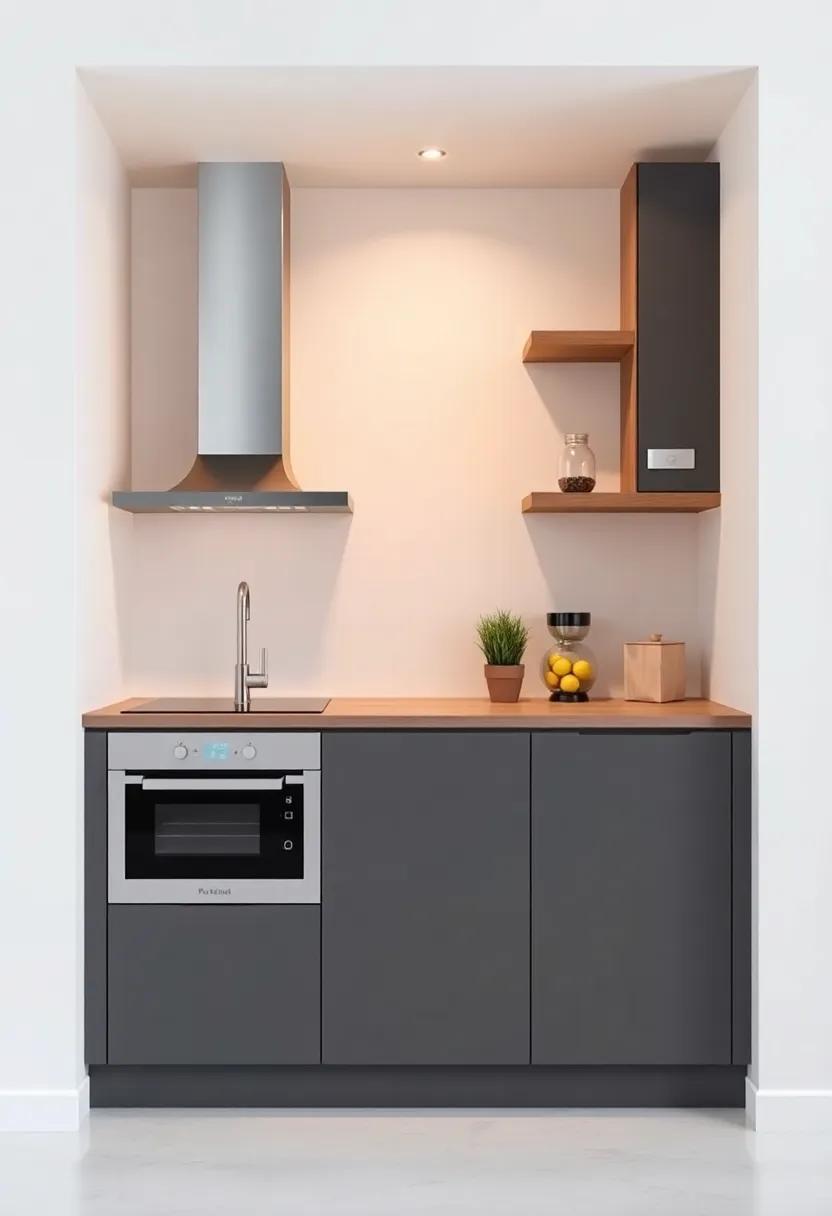
In a small kitchen, every bit of space counts, and the right appliances can make all the difference in how functional your area is. Opting for multi-functional devices can save both space and time. Such as, consider a combination microwave/convection oven that can bake, brown, and reheat all in one unit. Another great option is a compact dishwasher that fits under the counter, allowing you to keep your countertop clear while simplifying cleanup after meals. Look for appliances that can be easily stored or that blend seamlessly into cabinetry to enhance your kitchen’s aesthetic.
Additionally, innovative storage solutions within your appliances can also help alleviate clutter.Many modern refrigerators come with adjustable shelves, pull-out drawers, and door-in-door designs, maximizing efficiency and accessibility.Choosing a countertop induction cooktop can provide quick cooking options without taking up permanent space, and when not in use, it can be conveniently stowed away. Investing in smart appliances that help you manage your space intelligently can set the stage for a more organized and enjoyable cooking experiance. For more ideas on integrating technology into small spaces, visit Houzz.
Using Sliding Doors to Open Up your Kitchen Extension
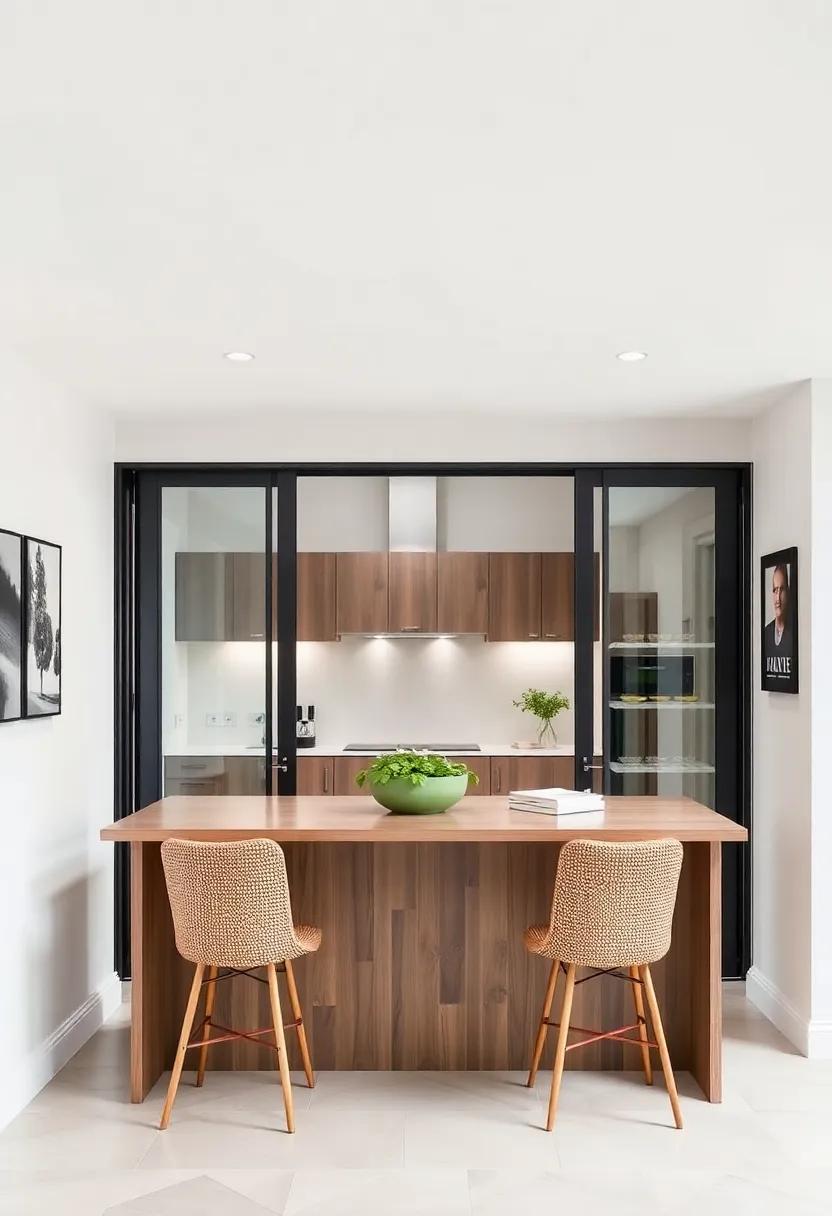
Sliding doors can revolutionize the feel of your kitchen extension, creating a seamless transition between your indoor and outdoor spaces. Embrace natural light by choosing large glass panels that not only brighten your kitchen but also make it appear more spacious. Whether you opt for bifold or pocket sliding doors, the design choice can add a touch of elegance while enhancing functionality. Additionally, consider incorporating a decking area right outside to encourage outdoor dining or entertaining, effectively extending your living space beyond the walls.
To maximize visual appeal, examine your color palette and frame materials; wooden frames can add warmth, while aluminum options provide a sleek, modern aesthetic. Prioritizing energy efficiency is essential, so look for doors with multi-glazed glass for better insulation. When well-planned, sliding doors become a focal feature of your kitchen, inviting guests to mingle and enjoy the ambiance:
- Maximize views of your garden or backyard.
- Enhance traffic flow between indoor and outdoor areas.
- create an airy feel even in smaller spaces.
For more inspiration and ideas, explore resources on Houzz.
Incorporating Outdoor elements for a Breath of Fresh Air
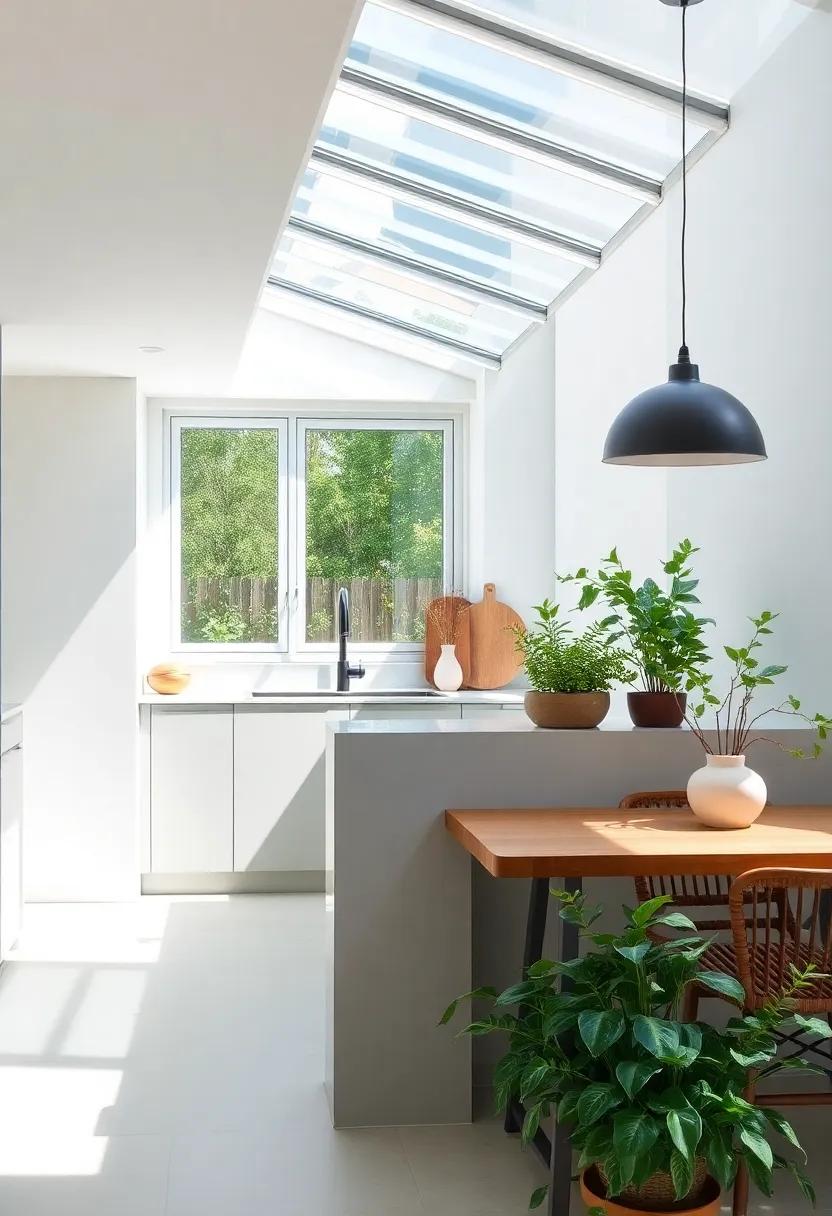
Transform your small kitchen extension into a serene retreat that seamlessly connects with nature. Incorporating outdoor elements can enhance the ambiance and functionality of your space. Consider adding a green wall or vertical garden, which not only introduces a splash of color but also improves air quality. A countertop herb garden can bring fresh flavors to your cooking, while together acting as a natural decor piece. Additionally, think about installing large windows or glass doors that open up to your garden or balcony, flooding the kitchen with natural light and offering calming views of your outdoor sanctuary.
To further embrace the outdoors, utilize materials that reflect the beauty of nature. Equip your extension with wooden accents, such as reclaimed wood shelves or a rustic dining table, to create warmth and character. You might also think about integrating indoor-outdoor flow with a decking area or patio that extends your kitchen space for al fresco dining. For a creative touch, include a small water feature or a fire pit outside the kitchen to create ambiance for gatherings. Make your small kitchen feel spacious and inviting by harmonizing it with the tranquility and beauty of the outdoor environment. For more ideas on nature-inspired home design, visit Architectural Digest.
Designing a Minimalist Kitchen that Maximizes Aesthetic Appeal
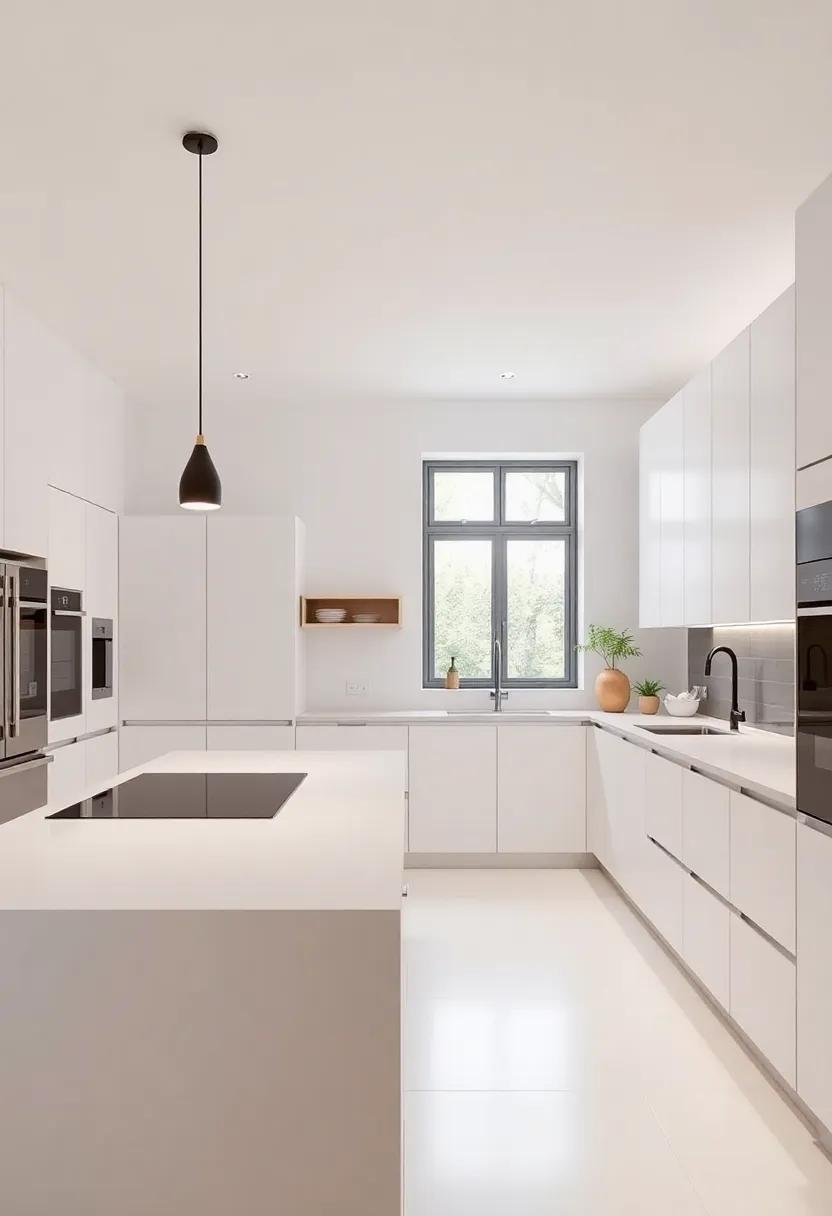
Embrace a clean and uncluttered design to create a kitchen that exudes elegance and sophistication. Start by selecting a neutral color palette with whites,greys,and soft earth tones to maintain a calming atmosphere. to avoid visual chaos, opt for streamlined cabinetry without ornate details, ensuring smooth surfaces that maintain a contemporary feel. incorporate hidden storage solutions to keep countertops free from unneeded items, allowing the beauty of your chosen materials to shine through. Consider using natural elements like wood or stone accents to soften the aesthetic while adding depth and texture.
Lighting plays a crucial role in highlighting the minimalist design. Choose under-cabinet lighting to illuminate workspaces while minimizing cluttered appearances.For a statement piece, hang a simple pendant light over the island or dining area, combining functionality with understated elegance. Integrating appliances discreetly behind cabinetry maintains a cohesive look and enhances the overall aesthetic. Remember, the goal is to blend form and function seamlessly, resulting in a stylish kitchen that remains practical and enjoyable for everyday use.For more inspiration, check out Southern Living.
Strategies for Blending Your Kitchen with Adjacent Living Spaces
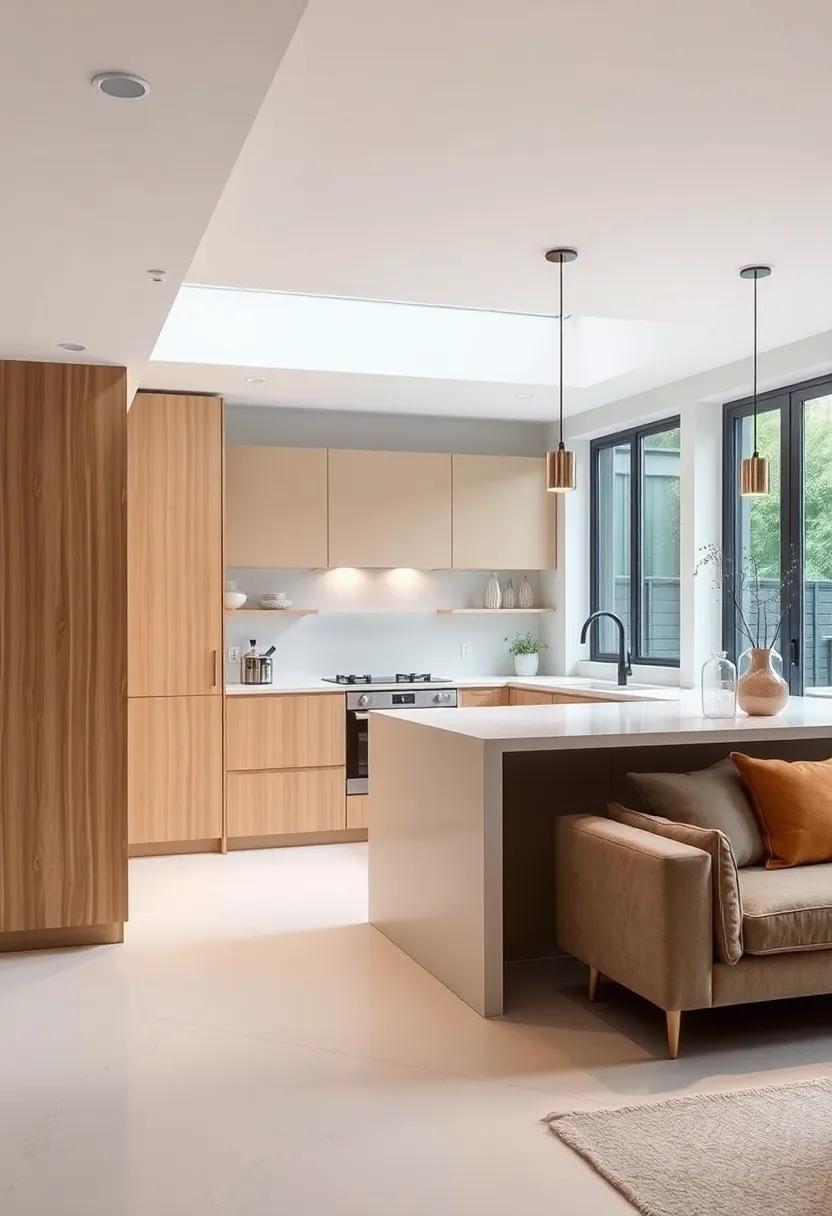
Creating harmony between your kitchen and adjacent living spaces is essential for a unified look and feel. To achieve this, consider utilizing open shelving along the kitchen walls, which not only enhances accessibility but also allows for displaying decor that ties into your living room’s aesthetic. You can also incorporate a color palette that runs consistently through both areas. This can include coordinating cabinetry with your living room furnishings or using similar tones for wall paint. additionally, merging textures—such as glossy kitchen tiles and soft textiles in the living spaces—can create a seamless transition that invites you to move effortlessly from one area to another.
Another effective method is to utilize furniture that serves dual purposes. As a notable example, a kitchen island with seating can double as a dining area, while a bar cart can provide both storage and a stylish focal point. Consider creating a visual border using rugs or lighting fixtures that define the kitchen space without creating a stark separation.Soft pendant lights can serve as a bridge between kitchen and living area, visually emphasizing the connection. By integrating elements like these, you enhance the overall flow of your home while maximizing functionality and style. For additional inspiration on blending spaces, visit House Beautiful.
The Benefits of Built-In appliances in Small Kitchen Design
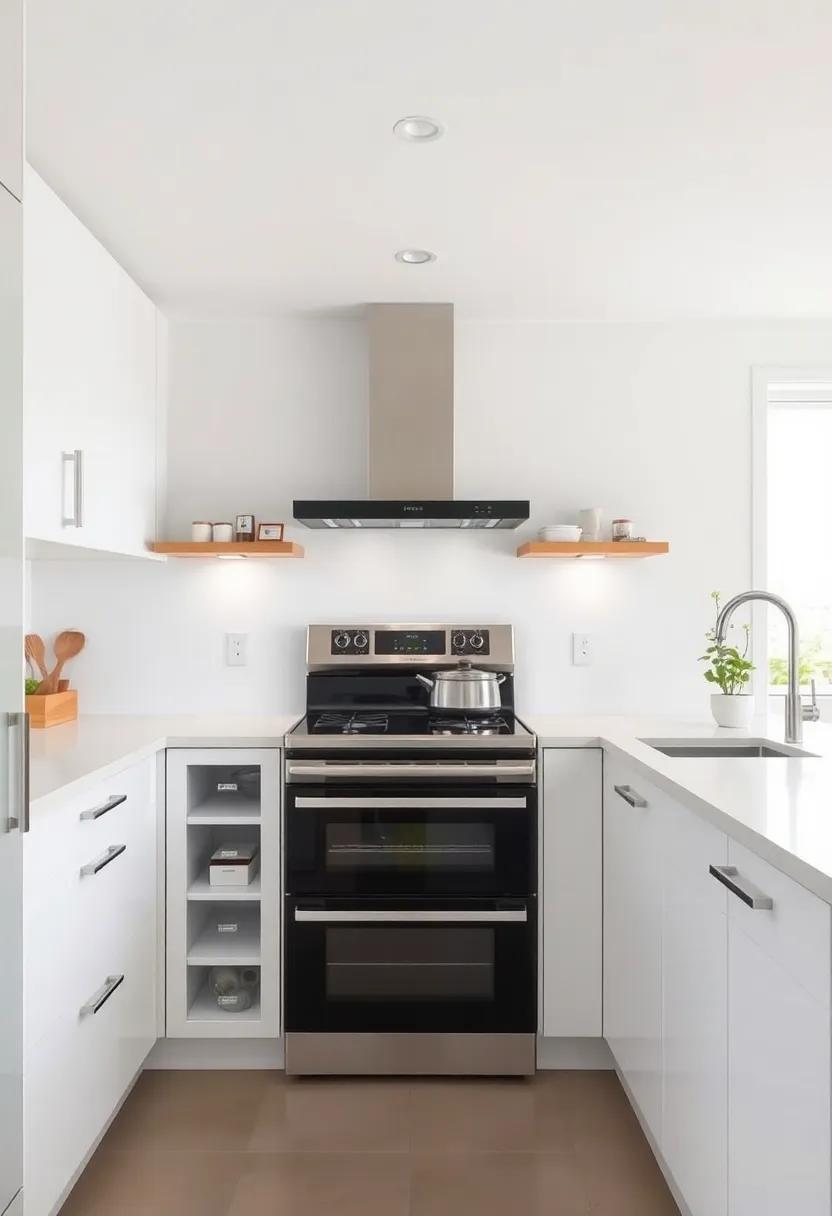
In small kitchen design, built-in appliances serve as the unsung heroes, seamlessly blending functionality with aesthetics. by integrating appliances like refrigerators, dishwashers, and microwaves directly into cabinetry, you create a cohesive look that maximizes surface area and minimizes visual clutter. This approach not only enhances the flow of the kitchen space but also allows for greater flexibility in layout. Homeowners can enjoy more counter space,which is crucial for meal readiness,and have the additional benefit of easily accessible storage to tuck away any items that may disrupt the kitchen’s harmony.
Moreover, utilizing energy-efficient built-in appliances can also contribute to an eco-amiable kitchen. Many modern options come with high energy ratings, thereby reducing utility bills and minimizing environmental impact. When considering built-in designs, it’s important to think about the overall kitchen workflow and how each appliance fits into daily routines. Innovative designs such as pull-out ovens or slide-in ranges can further enhance usability. Explore various designs and options at applianceconnection.com to find the right fit for your small kitchen transformation.
Artful Use of Textures to Elevate small Cooking Environments
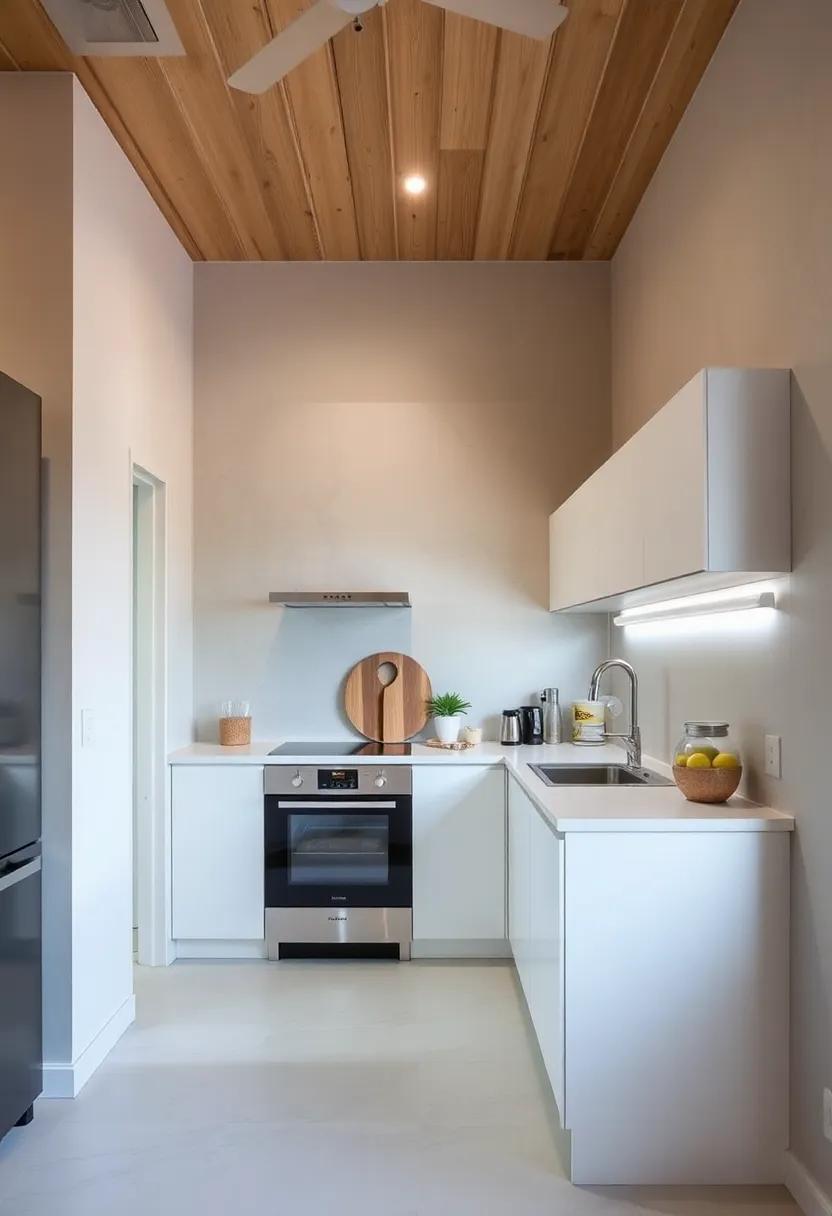
Transforming a small kitchen into an inviting culinary space can be effortlessly achieved through the artful application of textures. by layering materials, homeowners can create a sense of depth and interest without overwhelming the limited area. Consider blending smooth surfaces such as quartz countertops with rustic finishes like reclaimed wood shelves.This juxtaposition creates a dynamic visual experience that encourages creativity while cooking and entertaining. Textured tiles can also contribute to the decor,as they not only add a tactile dimension but can serve to define areas within the kitchen,such as a cozy breakfast nook or cooking zone.
Utilizing textiles in small kitchens can further elevate the ambiance. Introduce textured fabrics through well-placed items such as dish towels, curtains, or seat cushions to add warmth and comfort. Earthy tones or bold patterns can bring personality to the space while maintaining a cohesive look. Integrating a chalkboard or a backsplash with a matte finish can enhance the overall texture and also serve a practical purpose for notes and recipes. By thoughtfully selecting and incorporating these diverse elements, even the most compact kitchens can shine with personality and functionality. For inspiration on texture applications in kitchen design, visit Houzz.
Embracing a Scandinavian Style for Functional Space Solutions
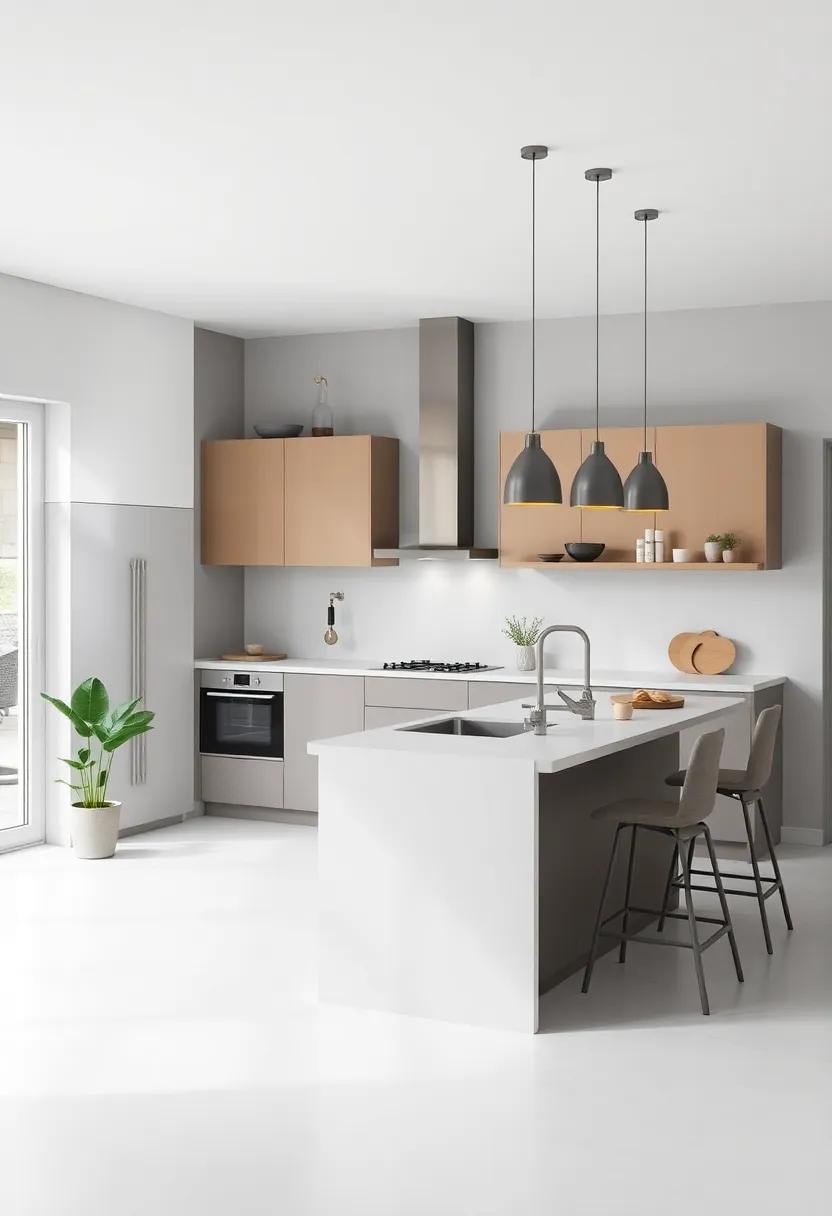
Incorporating a Scandinavian aesthetic can transform your small kitchen extension into a haven of functionality and style. this design ideology, characterized by minimalism and a focus on natural light, aligns perfectly with the need to maximize space. Opt for light-colored cabinetry and sleek, clean lines that make your kitchen feel more open. Utilize multi-functional furniture, such as a pull-out table or stools that tuck away when not in use. Emphasizing natural materials like wood and stone not only adds warmth but also reinforces the practical side of Scandinavian design, making every item count.
To further enhance the effectiveness of your kitchen layout, consider these design principles:
- Open Shelving: Display dishware and decor to keep the space feeling airy.
- Integrated Appliances: Choose built-in options to maintain a streamlined appearance.
- Smart Storage: Use vertical space and hidden compartments to reduce clutter.
| Design Element | Functionality |
|---|---|
| Natural Light | Enhances space perception |
| Neutral Colors | Creates a calming atmosphere |
| Textural Contrast | Adds depth and interest |
By integrating Scandinavian-inspired decor and functionality, you can create a small kitchen that not only looks appealing but is also incredibly efficient. Explore more on how to elevate your space with inspired decor at Houzz.
Interactive Islands: Designing a Small Kitchen with a Purpose
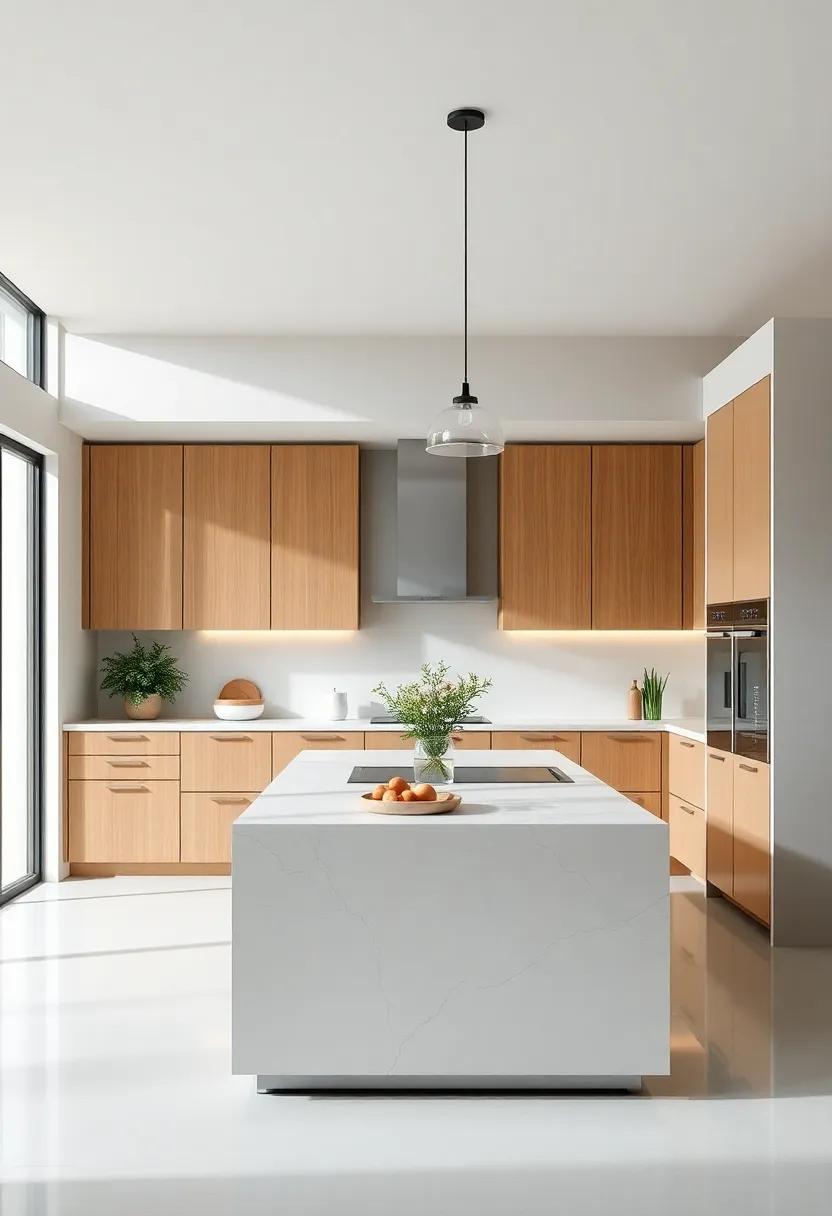
In the realm of small kitchen designs, interactive islands serve as multifunctional hubs that enhance both style and utility. These islands can act as a workspace, dining area, or a storage solution, promoting an efficient flow in the kitchen.To maximize this space, consider incorporating features like built-in shelves or drawer systems, allowing for optimal organization without sacrificing floor area.For an added touch of elegance, you might opt for a visually appealing countertop that complements the overall kitchen aesthetic—think quartz or butcher block for durability and style.
When planning your interactive island,it’s essential to consider the layout and accessibility. The island should not only be pleasing to the eye but also promote easy movement and interaction among users. awareness of traffic flow is crucial: make sure there is ample space between the island and other kitchen components. Accessories like bar stools or folding chairs can encourage a social atmosphere when entertaining guests. Incorporating an integrated appliance or a small sink can also enhance functionality, making the island an indispensable part of your small kitchen. For ideas and inspiration, you can explore more at Houzz.
Crafting a Unique Layout that Prioritizes Flow and Accessibility
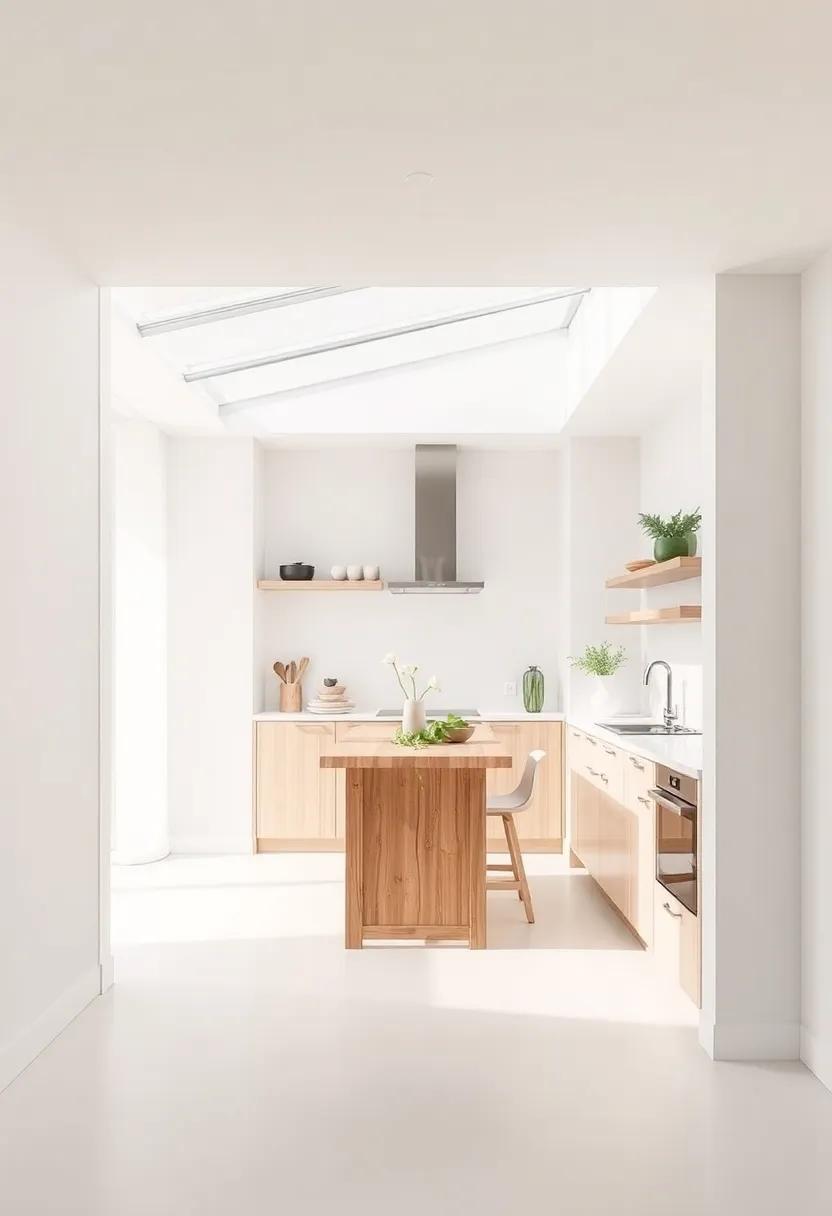
Creating an effective kitchen layout is essential to maximizing both functionality and the overall feel of the space. Start by analyzing the primary workflow zones within your kitchen: prep, cooking, and cleaning.Ensuring smooth transitions between these areas can immensely improve usability. Consider integrating open shelving or cabinets that blend seamlessly with the architecture for enhanced accessibility. Optimizing the placement of essential appliances is another key factor.Placing the refrigerator close to the prep area and ensuring your oven is easy to reach from the sink can significantly reduce the need for unnecessary movement.
Another strategy involves the innovative use of multifunctional furniture and flexible components. For example, a kitchen island with built-in seating can serve as both a work surface and a dining area, promoting a sense of community while keeping everything within reach. Use varying heights for countertops to accommodate different tasks and encourage social interaction. By selecting materials and colors that reflect light—such as glossy finishes on cabinets and quartz countertops—you can create an inviting atmosphere. This approach not only enhances flow but also contributes to a radiant, airy space that makes cooking a pleasure rather than a chore. For more tips on small kitchen designs, visit House Beautiful.
Closing Remarks
As we conclude our exploration of innovative small kitchen extension ideas, it’s clear that maximizing your space doesn’t have to be a daunting task. With thoughtful planning and a touch of creativity, even the coziest kitchens can transform into functional, stylish culinary havens. Whether it’s through clever storage solutions, incorporating open shelving, or expanding your layout with a sunlit nook, each concept offers a unique opportunity to enhance the heart of your home. Remember, the charm of a small kitchen lies not in its size but in its ability to inspire connection, creativity, and joy. So, take these ideas to heart, embrace the possibilities, and watch your compact kitchen evolve into a space that reflects your personal style and culinary passions. Happy cooking!
As an Amazon Associate I earn from qualifying purchases.

